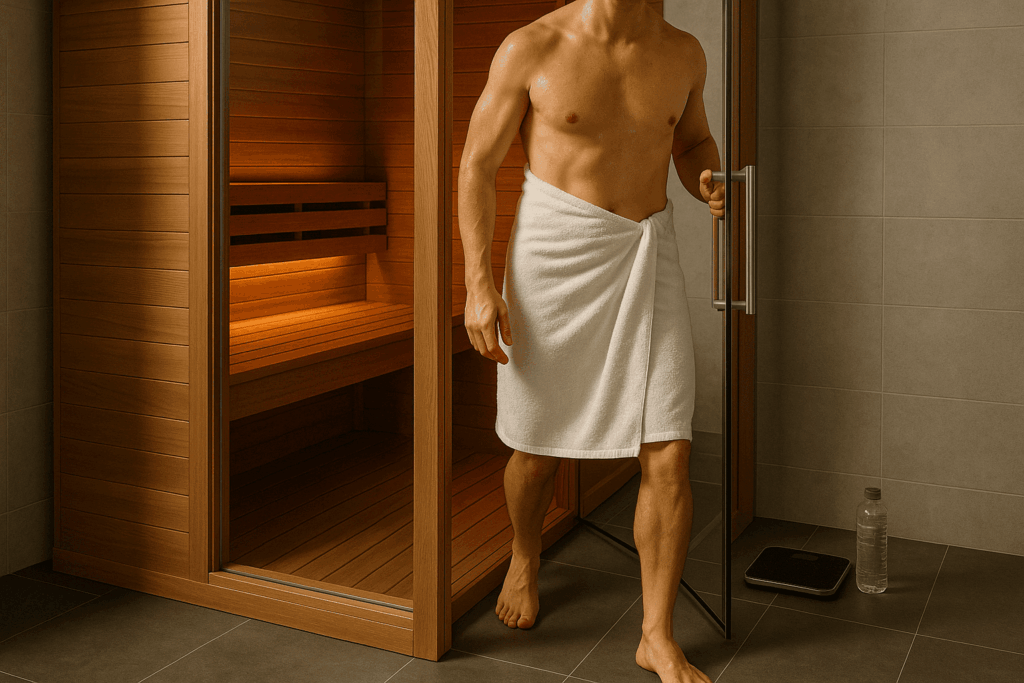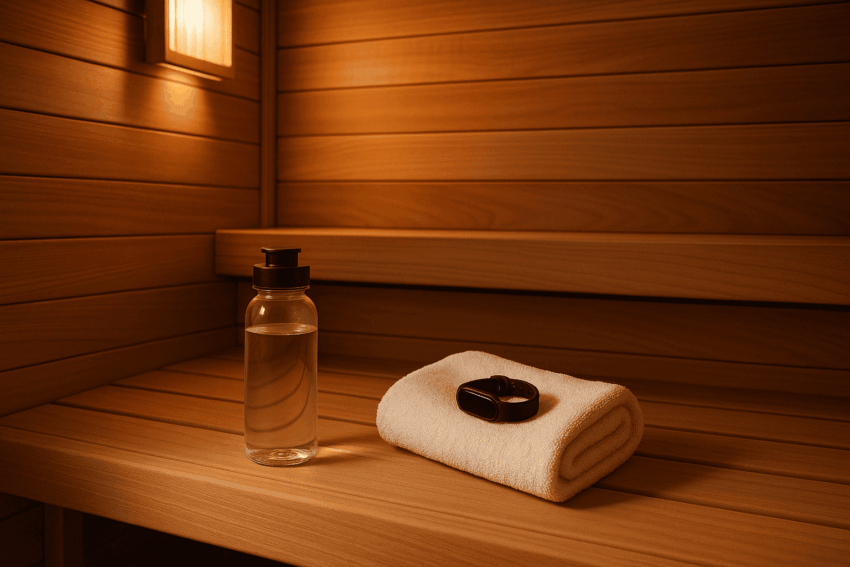Saunas make you sweat but does that mean you’re burning fat? Here’s what the science really says about sauna therapy and weight loss.
As saunas continue to grow in popularity, many users wonder whether the heat they’re enduring could also help them slim down. While the immediate sweat loss is obvious, the connection between sauna therapy and weight loss is more complex. This article examines what current science says about fat metabolism, calorie burn, fluid loss, and the physiological effects of sauna bathing.
1. Saunas Increase Caloric Expenditure — But Modestly
A typical 20–30 minute session in a sauna can elevate your heart rate to 100–150 bpm, mimicking mild aerobic exercise. This passive cardiovascular effect can lead to calorie burn, though it’s not as high as actual physical activity.
- Mild sessions: ~50–100 calories
- Extended/high-heat sessions: up to 200 calories
That’s roughly equivalent to a short walk. While useful, it’s not a standalone method for fat loss.
2. Immediate Weight Loss Is Mostly Water
Sauna-induced sweating leads to a rapid drop in body weight, but the majority of this is fluid, not fat. After rehydration, weight often returns.
However, strategic use (e.g., post-workout or for fighters) can be helpful for temporary weight reduction — as long as hydration is managed properly.
3. Sauna May Support Fat Metabolism Indirectly
Sauna therapy may enhance other processes that support long-term weight management, such as:
- Increased insulin sensitivity
- Reduced cortisol levels (lower stress = fewer cravings)
- Improved sleep quality, which affects appetite regulation
- Enhanced muscle recovery, supporting consistency in physical training
According to the (Cleveland Clinic source), regular sauna use helps lower systemic inflammation and supports healthy metabolic function — both important in managing body composition.
4. Infrared Saunas vs. Traditional Saunas
Infrared saunas operate at lower temperatures (120–140°F) and penetrate deeper into the skin. This may enhance:
- Circulatory stimulation
- Core body temperature increase
- User tolerance for longer sessions
Although more comfortable for extended use, evidence does not conclusively show infrared burns more calories than traditional heat. Both forms can support recovery and cardiovascular strain.

5. Best Practices for Sauna Use in Weight Loss Plans
To use sauna therapy as a supportive tool, not a primary method:
- Use the sauna after workouts to support muscle recovery and inflammation control
- Stay well-hydrated to avoid electrolyte imbalances
- Combine with sleep, nutrition, and training — not as a shortcut
- Avoid prolonged exposure to attempt extreme weight loss (dangerous and ineffective)
Saunas enhance an overall wellness routine, but they are not a substitute for exercise or dietary changes.
Conclusion
Sauna therapy alone is not a weight loss miracle — but it can be a valuable ally in a broader strategy focused on metabolic health, exercise recovery, and stress reduction. By improving insulin sensitivity, reducing inflammation, and supporting cardiovascular conditioning, sauna sessions may indirectly help you maintain a healthier body composition.
If you’re serious about long-term fat loss, use the sauna to support consistency, not replace discipline.
